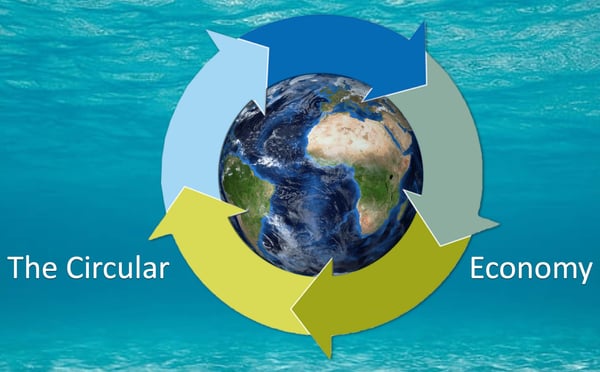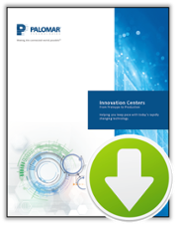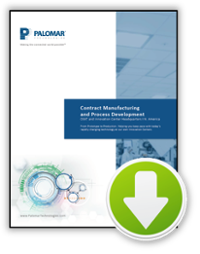
The current pace of technological change is only matched by levels in geo-economic uncertainties, themselves without parallel in over a century. That having been said, there are also a number of “big-picture” fundamentals that bring much needed clarity to key aspects of future life. This is not to say that all the details are known, but it is to observe that much practical information can be gained from the overall direction of the world, the global semiconductor industry in particular. One such impactful element is the rise of the “circular economy”.
Human inventiveness has always taken a lead from nature. Never more so as we move into the era of compute power based on neural networks, encryption based on the “contradictions” found in quantum mechanics, and sensors that seek to equal, then exceed, their biological counterparts.
The idea of the “circular economy” takes us one step further. From mimicking nature’s brilliance, to mimicking its life-death-life harmony. In other words, consuming resources at no faster rate than we can renew those resources. Living within nature’s generosity, not one generation’s greed. This is to ensure that people and planet are around a lot longer than if we continue to thoughtlessly pollute.
As with many newly minted terms, it is a phrase intended to re-energize and create headlines to get across an idea that society considers important. This was true of now dated terms such as “globalization” and “stakeholder”. Indeed, if there is an irony, it is that novel vocabulary rarely describes anything new, nor is to the forefront of the actual change. The usefulness is really to provide a short phrase by which we can quickly align behind behaviors considered to improve the common good.
This is certainly true of the “circular economy”. Unlike earlier our agricultural forebears, the greater our output, the more we became disconnected from nature and the lower our respect towards finite resources. The invention of plastic, then artificial fibers and other materials suddenly displaced dependence on the growing cycles of cotton, rubber and wood, vastly amplified by the fact that these artificial alternatives were significantly cheaper and subject to an equally vast variety of uses and innovation (just think of how many products are made from petroleum).
The post-1945 consumer boom was largely predicated on this. Socks were no longer darned. Fashions no longer updated with accessories to make them look new. Today, microwaves are replaced, not repaired. Indeed, when the washing machine fails, many of us take the opportunity to discard and obtain the latest model. The ideas of “make-do and mend” and “use until it can no longer be repaired” seem positively Victorian. What has happened to suddenly challenge such behaviors is that the reality of pollution and the limits of physical space have finally caught up with us, and caught up with a bang. The big question is, “What difference will this make to technological advance?”
Returning to an economy that references earlier agrarian-nature attitudes almost seems counterintuitive to improvements in technology and material advance. After all, upgrading a smart phone or personal computer by definition means discarding the old.
The principles behind the circular economy present us with an alternative, however. We can anticipate that next generation computers and smart devices will have modular features that upgrade performance and extend their useful life, yet keep it near the top of the technological food-chain. Equally, ecology, recycling, and final disposal will become more and more dominant in how these things—and pretty much everything else—is designed, manufactured, and sold.
As we can readily see in the media, the principles of extending useful life, modularity and upgradability, lower power consumption and design-for-disposal are already impacting the semiconductor and associated industries. Anyone who doubts has only to examine the increasingly importance ascribed to—and growing details present—in the technical roadmaps and ESG statements (environmental, social and governance) found in the public domain.
Though Palomar is only a mid-midsized company, we take our environmental responsibilities as seriously as the largest multinational. Three years ago, we moved into our new building designed to reduce our carbon footprint, while simultaneously we began to green-reorient our internal manufacturing protocols, aligning them to carbon sensitive iteration and improvement. Through much of the past twelve months we have continued along this path as we planned to integrate our vacuum reflow operation under the same roof, utilizing these same protocols, together with new things we have learned over the past few years. The result will be a much more efficient use of materials, lower power and water consumption, minimized waste disposal, maximized recycling and substantially reduced quantities of unreclaimable materials.
At the same time, our global Assembly Service centers are working with our customers on new generations of low-power, high-performance device packaging, itself designed to be returned and renewed, not add to the pile of toxic waste. Seeing what our customers are doing only adds to our enthusiasm in designing for sustainable innovation as regards our bonder and vacuum soldering system roadmaps for the mid-2020s.
Download the brochure for your region to learn more about Assembly Services:
----
Dr. Anthony O'Sullivan
Strategic Market Research Specialist
Palomar Technologies


